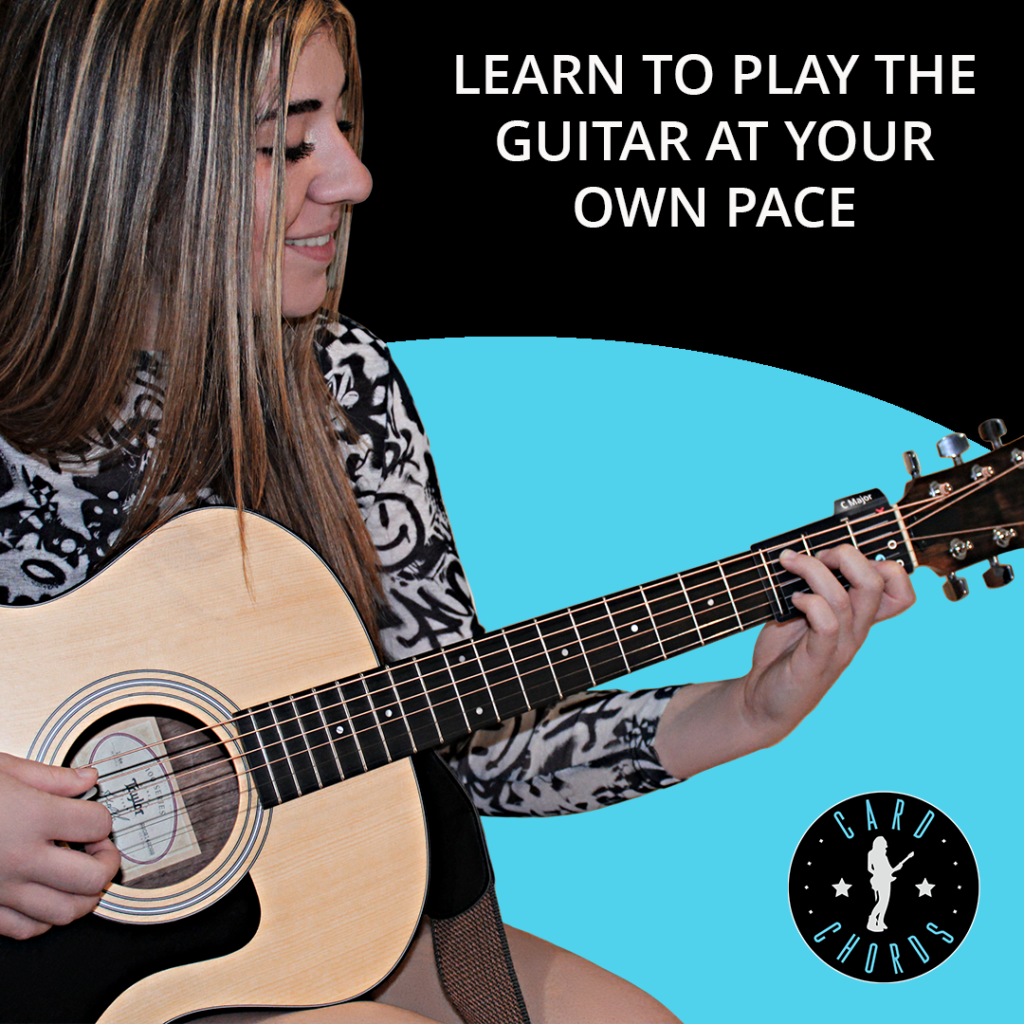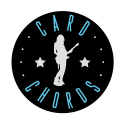Let’s assume you just bought a guitar. You saw someone on YouTube say that all beginner guitarists need to learn basic chords as soon as possible, and you’ve decided to give it a shot.

Tabs, tutorials, explainers, and how-to videos, no matter how straightforward they may be, probably didn’t help too much. After all, they’re usually made by guitar enthusiasts who have very little (if any) experience as guitar instructors or coaches. That’s where Card Chords come into play.
Card Chords were invented to effectively replace guitar instructors and music schools, at least as far as basic guitar chords are of concern. They were designed and created to help beginners learn how to play chords on the guitar from the comfort of their homes without breaking the bank.
So, how do you use Card Chords? Even though they’re the simplest chord-learning tools on the current market and their creator, Mike Grande, created more than a few videos explaining the process, there may still be a few people who feel confused about how to use them.
In this article, we’ll break down every feature of Card Chords and explain how to effortlessly use these perforated tabs to master elementary guitar chords, so let’s begin.
Choosing the Right Edition of Card Chords
If you haven’t already bought your first set of Card Chords, it’s important to understand that they come in three editions. Just like different brands make guitars in different sizes, Card Chords were launched in three series, each fitting the standard specs of featured guitars.
The Les Paul Edition is the first option. These Card Chords were designed to fit all guitars made by Gretsch, Gibson, and Epiphone. The second option is the Stratocaster Edition. If you own a Squier, Telecaster, Stratocaster, or a guitar from Ibanez, Jackson, or Yamaha, this edition of Card Chords is best for you.
Finally, there are the Universal Edition Card Chords. These Card Chords tabs can fit on any guitar apart from nylon-strung acoustic models. If you own an off-brand guitar or are unsure which model your instrument is, just grab a set of Universal Card Chords.

Reading the Card Chords Tabs
Card Chords are purposefully designed to be easy to use. However, these tabs feature a slightly different type of “notation” compared to contemporary tabs.
The first feature of all Card Chords sets is the chord nameplate. It’s part of the tab that slightly sticks and features the name of the chord it is describing. This ensures that you don’t have to immediately memorize all the finger notation markers and allows you to understand which chord you’re practicing and learning.
Speaking of finger markers, there are three types of notation markers. They are color-coded so that you can instantly determine which is which with just a glance, so let’s break them down:
- The red “X” marks the positions that shouldn’t be played at all. Simply skip the entire string that features this marker.
- The silver rings indicate that open notes should be played. Don’t press any frets, but play the strings that feature this marker.
- The blue enumerated circles tell you which fret to press and in which order.
Placing the Card Chords On Your Guitar’s Fretboard
Now that you understand the system behind the Card Chords tabs, it’s time to place the card on your guitar’s fingerboard.
Card Chords are perforated tabs, each featuring two holes. These holes are perfectly sized to fit above the metal frets. Pick up the Card Chords tab that you wish to learn on, and place it on your guitar so that the chord nameplate is facing upward.
These tabs are meant to be placed on the first three frets of the fretboard, so simply align the Card Chords tab with the metal frets, and you’re set to go.
Fretting the Enumerated Circles
The blue circle markers feature numbers that tell you where to place the fingers of your fretting hand. The number “1” marks the spot where your index finger should be; the number “2” marks the position of the middle finger; the number “3” marks the ring finger, and the number “4” marks the position of the little finger.
You’ll also notice that each of these markers sits in different places. Their position tells you which fret should be pressed. Connect the dots, and you’ll learn how to play that chord.
Strumming the Strings with the Card Chords On the Guitar
Unlike other tabs, Card Chords enable you to play “over” them. Once the tab has been placed and all the markers fretted, all that’s left to do is pluck the strings.
Mike and his team have designed Card Chords to fit the dimensions of the guitar’s fretboard perfectly, so as long as you’ve purchased the right Edition, you won’t even feel that a Card Chords tab is on your guitar.

Removing the Card Chords Tab
Once you’ve practiced the chosen chord for a while, it’s time to take the next step – playing a chord on your own without any helping tools.
One of the best features of Card Chords tabs is that you can place your fingers on the frets and remove the tab from your guitar without moving your fretting hand. This means that you’ll know how to play that chord on your own, which will in turn boost your confidence.
Additionally, since Card Chords are as easy to install as they are simple to remove, switching up to a different Card Chords tab is a walk in the park. Once you’ve mastered one chord, move on to the next one, and you’ll have mastered all elementary chords in no time.
Get Your Card Chords Set and Learn Basic Chords Today
If you haven’t already bought your first deck of Card Chords, you can do so on our official website by following this link. You don’t need a guitar teacher, and you don’t need to spend hundreds of dollars on guitar lessons to learn how to play simple chords – just grab your Card Chords tabs, and you’ll be able to learn simple chords in a single day!

